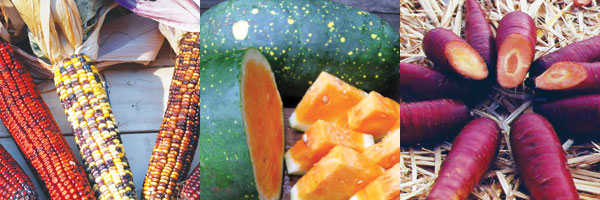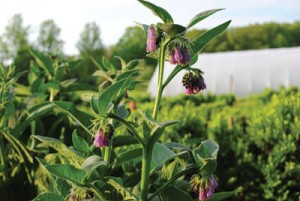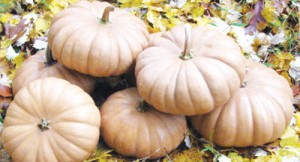We all know biodiversity is a good thing. But how does gardening with heirlooms promote biodiversity? And how can you garden with biodiversity in mind?
We think of biodiversity on three levels: genetic, species, and ecosystem. All three apply to your garden or farm, no matter its scale.

- Heirlooms may carry genes that provide disease resistance or other useful traits we don’t even know we need. Preserving heirloom varieties maintains this “gene bank” as insurance against future plant diseases or other threats.
- Genetic variation within a planting gives that crop resiliency to cope with the unexpected – we may lose some plants, but we can build stronger varieties by saving seed from those that survive. To maintain diversity within a variety, we save seed from a large number of plants.
- Traditional plant breeding with open-pollinated (OP) varieties builds biodiversity by creating new genetic profiles with each generation. It also allows us to explore unexpected mutations – with plants, mutations often aren’t bad. A mutation is simply a shift in the genetic code, sometimes with unexpectedly good results.

Just growing a lot of different kinds of plants creates species diversity in your garden. But you may not be aware of all the benefits you’re getting. Ecologists correlate species biodiversity with productivity. That means more diverse systems produce more biomass. And that means more veggies for your table!
Many modern varieties are bred for monoculture conditions. Heirlooms are already adapted to gloriously biodiverse, ecologically grown gardens, like those of our ancestors.
And biodiversity of one type, like the plants in your garden, tends to come along with increased biodiversity of other species, like beneficial insects and micro-organisms in your soil – which compete with or prey upon garden pests and help control their populations.

Your garden is unlike anyone else’s. Celebrate it! Instead of trying to grow things that aren’t suitable for your garden, seek out what is uniquely adapted to where you live. You may find that you don’t miss growing Buttercup winter squash – which may not handle pests in the Southeast – because you can grow sweet, long-storing Seminole pumpkins – which don’t produce well in areas with cool nights.
Rather than bemoaning a garden that doesn’t fit the commercial “ideal,” seek out the heirlooms that have been developed over generations, right where you live. Ecosystem diversity creates what foodies call “terroir” – the food grown where you live is unlike food grown anywhere else.
